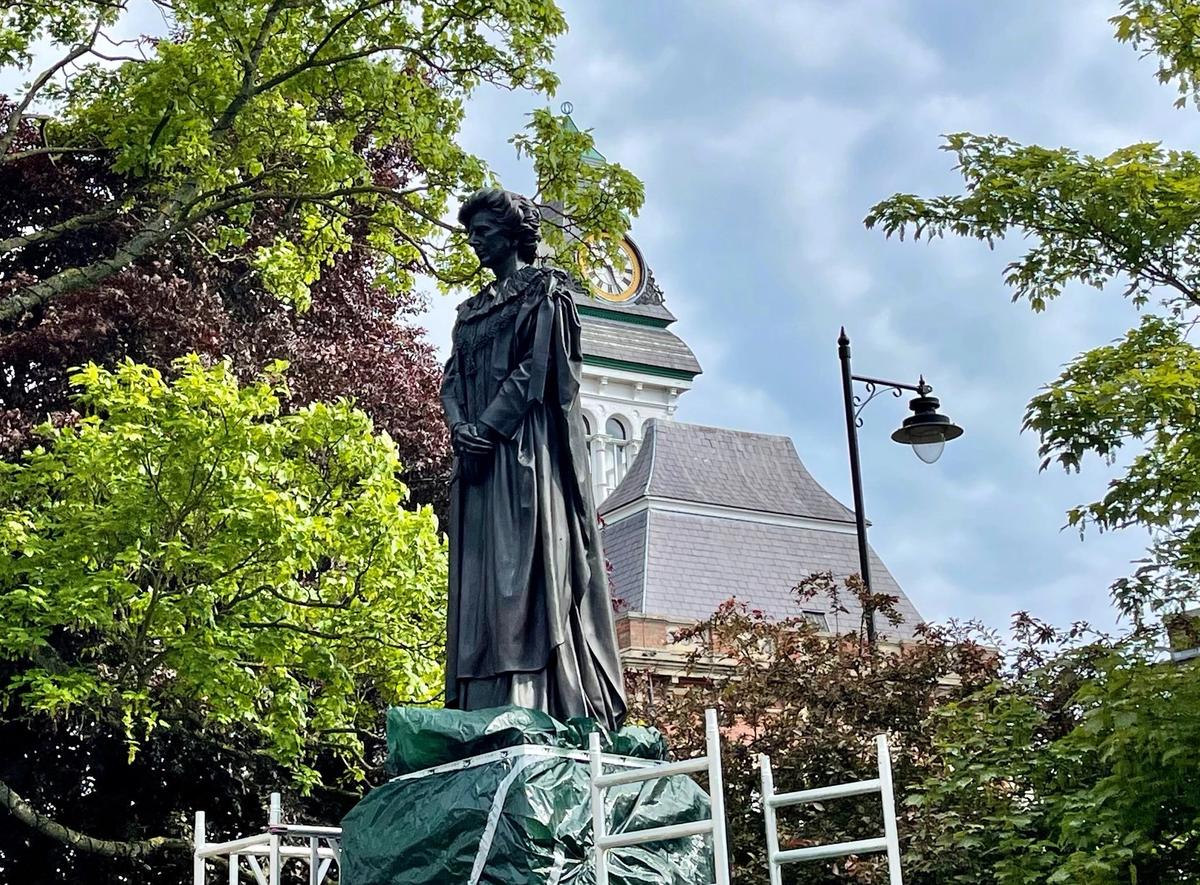A controversial statue of the late British Prime Minister Margaret Thatcher has found a home after years of wrangling over its final location. The work, by the UK sculptor Douglas Jennings, was initially due to be erected near the Houses of Parliament in central London but was installed over the weekend in Thatcher’s home town of Grantham, Lincolnshire.
Within hours of its unveiling, it was vandalised by Jeremy Webster, the deputy director of the Attenborough Arts Centre at the University of Leicester, who threw eggs at the Thatcher effigy. Webster was not arrested according to the Telegraph.
The statue, which reportedly cost £300,000, was snubbed in 2018 by the City of Westminster. Meeting minutes dating from January the same year reveal that the memorial statue was scheduled to be sited on the west side of Parliament Square. But numerous organisations linked to the application objected including the Metropolitan Police who said that the “statue is likely to be a focus for protesters and vulnerable to criminal damage [and recommended] changes to the design of the plinth to deter climbing”. A statue of the suffragist Millicent Fawcett by Gillian Wearing eventually became the first statue of a woman to stand in Parliament Square.
The statue of Thatcher, around 20ft high, stands in Grantham's Civic Quarter between statues of the physicist Isaac Newton and the 19th-century politician Frederick Tollemache. “She and her family have close ties with Grantham,” Kelham Cooke, the leader of South Kesteven District Council, told the BBC. "It is, therefore, appropriate that she is commemorated by her home town and that the debate that surrounds her legacy takes place here in Grantham.”
The bronze statue, which shows the politician in the regalia she wore to receive her membership of Order of the Garter in 1995, was commissioned by the Public Memorials Appeal and funded through public donations. The Grantham Community Heritage Association, the educational charity which manages Grantham Museum, also raised money for the memorial.
Thatcher, who was in post from 1979 to 1990, was the longest serving Prime Minister of the 20th century. “Nine years on from her death in April 2013, her social and economic legacy continues to divide opinion, with strong feelings on both sides of the debate,” says the council website. In 2002, another statue of Thatcher by the artist Neil Simmons on display at Guildhall Art Gallery in London was decapitated by Paul Kelleher.


